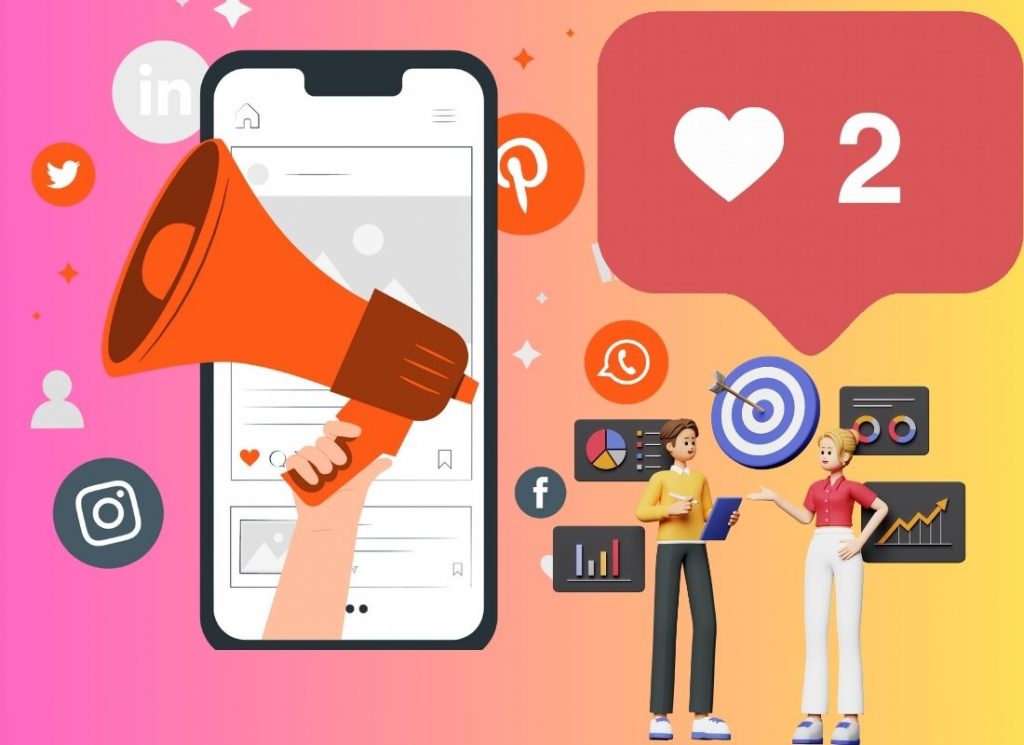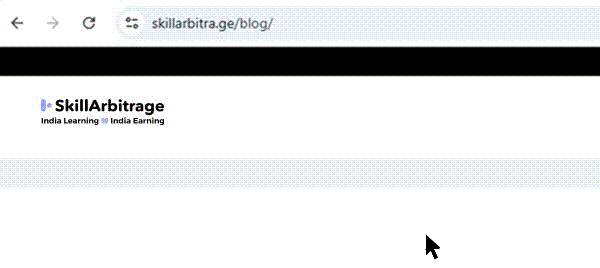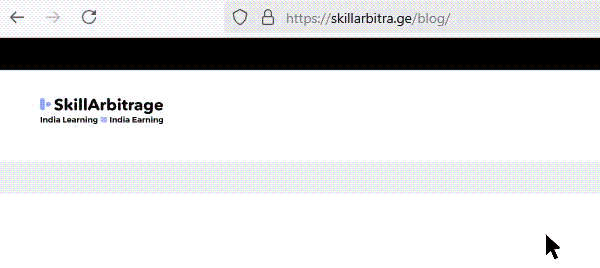This article explores the growing demand for unscripted relatable reel ads and teaches Indian freelancers how to position themselves as cultural marketing strategists for U.S. lifestyle brands.
Table of Contents
Previously on 22 niching laws…
Raghunandan learned the hard way. Niching isn’t optional. It’s survival. Without a clear position, freelancers fade into obscurity.
But positioning alone isn’t enough. Brands don’t just need a niche. They need relevance. They need to be talked about, shared, and embedded in everyday life.
That’s where unscripted relatable ads come in. The kind that don’t feel like ads but still sell effortlessly.
Now, it’s time to crack the code of unscripted relatable ads.
(Continued…)
Swathi barged in, dragging someone behind her. “Parvathi uncle, meet Meera Shetty.”
Meera smiled, adjusting the tote bag on her shoulder. “Hi.”
“She’s an old friend,” Swathi continued. “Brilliant entrepreneur. Launched her own snack brand. It’s really good.”
Parvathishankar didn’t even look up. His thumb was furiously scrolling Instagram.
“Are you… on Insta?” Swathi asked, frowning.
Parvathishankar smirked, turning his screen toward her. A reel played—a brother comforting his sister after a breakup, laughter, a hug… and a box of Mojo Pizza, naturally, in the scene.
It didn’t feel like an ad. But the brand was right there.
Raghunandan stepped in, watching closely. “It doesn’t feel forced, but it’s still marketing.”
Parvathishankar nodded. “That’s the brilliance of it. Nobody wants to watch an ad, but people love relatable moments. And when a product fits seamlessly, it sticks.”
Meera leaned in. “I need that.”
Parvathishankar finally looked up. “Tell me more.”
Meera reached into her bag and pulled out a small, brightly colored packet. “Here.”
Parvathishankar took it, turned it over in his hands, then tore it open. He popped a bite into his mouth, chewing slowly.
A pause. Then, a nod. “Crisp. Spicy. Hits immediately.”
Swathi grinned. “Told you.”
Parvathishankar held up the pack. “So what’s the problem?”
Meera sighed, resting her elbows on the table. “People love it when they try it. The challenge is getting them to pick it up in the first place.”
Parvathishankar kept chewing, considering her words. “What have you tried?”
“We did everything by the book,” Meera said. “Great branding, solid distribution. We even made a beautiful ad—full of nostalgia, tradition, slow-motion shots of my grandmother making it by hand.” She pulled out her phone and played the video.
The screen filled with golden light. A grandmother kneaded dough, flour dust swirling in the air. A young girl—Meera as a child—watched in awe. The tagline appeared:
‘A taste of home. Passed down for generations.’
Swathi smiled. “It’s beautiful.”
Meera sighed. “Yeah. But sales? Flat.”
Parvathishankar leaned back, tossing the empty snack pack onto the table. “So the people who do try it become fans. But the ones who haven’t… don’t even think about it?”
“Exactly.”
Swathi frowned. “You want them to crave it before they’ve even tasted it.”
Meera nodded.
Parvathishankar tapped his fingers on the table, then flipped his phone around. A reel played.
A college student sat at her desk, surrounded by textbooks, eyes heavy with exhaustion. The caption: ‘Midnight study sessions call for this.’
She reached into her bag, ripped open a pack of snacks, and took a bite. The crunch was loud. She closed her eyes. Bliss.
The comments were full of:
“OMG my mom used to pack this in my tiffin!”
“Where do I get this??”
“Wait, I thought this was just a South Indian thing!”
Meera blinked. “That’s it? No slow-motion shots, no emotional music, just… a moment?”
Parvathishankar nodded. “People don’t buy because they admire something. They buy because they see themselves in it.”
Swathi leaned in. “Okay, so… how do we make that happen for Meera?”
The difference between an ad and an unscripted relatable ad
Swathi spread her hands like a film director.
“Imagine this.”
A quiet, sunlit kitchen. A grandmother’s hands knead dough, dusted in flour. A slow-motion shot of golden, crispy snacks sizzling in oil. A young girl—Meera as a child—watches, wide-eyed.
Soft Carnatic music plays.
Cut to a dining table. A happy family. Smiles. A bowl of snacks passed around.
Text on screen: “A taste of home. Passed down for generations.”
Swathi turned to Parvathishankar and Raghunandan. “See? No hard sell. Just nostalgia. That’s an unscripted relatable reel.”
Parvathishankar laughed. “No, that’s an ad.”
Swathi frowned. “How is it not relatable?”
“Because it’s still trying to be something.” He spoke slowly. “Real people don’t post heritage montages. They post random moments from their day.”
He leaned back, thumb scrolling on his phone. “Here’s what Meera actually needs.”
1. A blurry, mid-bite selfie. Eyes wide. Mouth full. Caption: “Bro. Why is this snack CRACK? 😭🔥”
2 .A guy lying in bed, wrappers everywhere, holding up the last piece. Dramatic zoom-in. “This was supposed to last a week. It lasted 17 minutes.”
3. A crowded bus. Someone sneaks a bite from their bag, eyes darting around. A kid notices. Zoom in on the kid’s death stare. Caption: “When you bring snacks but forget to bring enough.”
Parvathishankar smirked. “That’s a reel.”
Meera’s eyes lit up. “That’s what people actually post.”
Raghunandan had entered unnoticed while Meera, Swathi and Parvathishankar were engrossed in their discussion. They jumped as he spoke up, holding up his fingers one by one.
- “Ads feel like productions. Relatable reels feel like life.”
- “Ads tell. Relatable reels show.”
- “Ads demand attention. Relatable reels earn it.”
- “The product doesn’t speak. The audience does.”
- “Ads get likes. Relatable reels get shares.”
He declared. “The first one says, ‘Look at me!’ The second one? ‘Dude, you have to see this.’”
How to make authentic unscripted relatable ads?
Swathi tapped her fingers on the table. “But uncle, let’s be real. Brands love control. How do we make sure this doesn’t look manufactured?”
Parvathishankar took a sip of his coffee. “Simple. You don’t make it. You guide it.”
Swathi and Raghunandan exchanged glances.
“Look at the best relatable brand content. It doesn’t feel like an ad because it isn’t scripted to death. Instead, brands create a playground for creators.”
He enumerated.
“Three golden rules.”
Let creators use their own voice.
- The more you dictate, the worse it sounds.
- Give a theme, not a script.
“Take this Rupay reel by Rishabh Shukla,” he continued. “It works because Rupay didn’t try to turn it into a generic ‘ad.’ They just let a funny guy be funny. He did what he does best – told a hilarious, relatable story. And Rupay? It naturally fits into the moment. No forced branding, no artificial dialogue.”
Make the product the consequence, not the focus.
- A girl wears Tantra → Men react → That’s the story.
- Not “Tantra is a great perfume. Buy now.”
“That’s why that Rupay reel clicks,” Parvathishankar explained. “The joke lands first. The engagement builds. And the product? It’s just there as a natural part of the punchline. It doesn’t shove itself in your face.”
Encourage imperfection.
- Unpolished. Unfiltered. Real.
- A slight stutter, a raw laugh, a spontaneous reaction – these sell better than any agency-polished script.
Parvathishankar tapped his phone. “Virality comes from relatability. The moment it feels too perfect, it’s dead.”
Swathi nodded. “Okay… so who creates these?”
Who should create unscripted relatable ads?
“Do we hire actors and just tell them to ‘act natural’?”
Parvathishankar chuckled. “Actors ‘acting natural’ is the fastest way to make something feel fake. Instead, you have three sources for creating unscripted relatable ads.”
Relatable creators (Micro & nano influencers)
- They already speak their audience’s language.
- Their content feels like a friend talking, not a brand preaching.
- Their audience trusts them more than polished influencers.
“Big influencers have reach, sure. But micro and nano influencers? They have influence. Their audience actually listens to them,” he explained.
“That’s why Rupay picked Rishabh Shukla,” Raghunandan added. “He’s not a ‘celebrity influencer.’ He’s just a guy people find funny. And when he talks, people actually pay attention.”
Real customers (UGC – User-generated content)
- When actual users talk about a product, it doesn’t feel like an ad.
- The enthusiasm is real. The delivery is imperfect. And that’s what makes it work.
Parvathishankar scrolled through Instagram and showed them a video. A girl excitedly unboxing a lipstick, rambling about how she got stopped twice because someone wanted to know what color she was wearing.
“No perfect lighting. No rehearsed lines. Just raw, genuine excitement. And that’s exactly why it works.”
Swathi’s eyes lit up. “Wait, are you saying we can make customers our marketers?”
“Exactly.”
Brand’s own employees (Behind-the-scenes culture)
- Showing real people behind the brand builds trust.
- Employees using, reacting to, or joking about the product makes it feel human.
“This one’s underrated,” Parvathishankar continued. “Imagine a behind-the-scenes video at Tantra. Your team testing new perfumes, reacting to scents, joking about which fragrance screams ‘CEO energy.’”
Swathi grinned. “Like, ‘Our intern wore Tantra to a meeting and now the manager keeps calling her ‘Ma’am’?’”
“Exactly,” Parvathishankar laughed. “Because people love brands that don’t take themselves too seriously.”
He stood up. “So, whether it’s creators, customers, or your own team, the goal is the same. Don’t sell. Share.”
Swathi nodded, fired up. “Okay. Next question. How do we measure if this is actually working?”
How to measure unscripted relatable ad performance?
Parvathishankar didn’t hesitate. “Simple. You stop measuring it like an ad.”
Raghunandan stared. “Meaning?”
“You don’t judge a stand-up comedian by ticket sales alone. You judge them by how many people quote their jokes.”
He pulled out his phone. “Same principle here. You’re not just chasing clicks and conversions. You’re measuring cultural impact.”
Shares > Likes
- A like is passive.
- A share means it hit home.
“That Rupay reel worked because people sent it to their friends saying, ‘Dude, this is literally you.’ That’s the metric that matters.”
Saves & comments > CTR
- Click-through rates matter for direct response.
- Saves mean people want to revisit it.
- Comments mean it started a conversation.
“If your comments section is full of people tagging their friends and saying, ‘We need to do this,’ you’ve won.”
Organic growth > Paid boosts
- If a post only performs when boosted, it’s not truly engaging.
- The goal is for the algorithm to push it because people love it, not because you paid for reach.
“Great unscripted ads should pick up steam on their own. If you have to keep paying just to keep it afloat, it’s not hitting right.”
UGC ripple effect
- The best unscripted ads inspire more content.
- People start making their own versions because they relate.
“If your audience starts recreating the trend in their own way, that’s the gold standard.”
Swathi processed it all. “So it’s not just about tracking sales?”
“Sales come when you own the conversation. And that happens when your audience doesn’t just watch. They start talking.”
Raghunandan tapped his fingers on the table. “Alright. One last thing. How do freelancers sell this? If every brand jumps on this, how do we stay ahead?”
How Indian freelancers can sell unscripted relatable ads to American brands
Parvathishankar set his phone down. “By not selling the service. Sell the system.”
Swathi wondered. “Meaning?”
Cultural conversation system > Videos.
- Any freelancer can say, ‘I’ll make relatable ads for you.’
- The real money is in saying, ‘I’ll build a system that keeps your brand in American cultural conversations month after month.’
“This isn’t about making one viral video. It’s about keeping your brand inside ongoing US trends, memes, and social discussions. You don’t sell a post. You sell a process.”
Position yourself as a ‘cultural signal strategist.’
- US brands don’t just need content. They need someone who understands what Americans are sharing, joking about, and engaging with right now.
- You’re not just a content creator. You’re a trend translator.
“The best freelancers don’t just make content. They predict what will resonate with Americans. They track US viral moments, decode Gen Z and Millennial humor, and position brands inside the cultural conversation before it peaks.”
How to track American cultural trends as an Indian freelancer
Follow US social media trends daily
- Twitter (X) trending topics (filter for the US).
- Instagram and TikTok’s trending reels & sounds.
- Reddit’s r/popculturechat, r/marketing, and viral meme pages.
Use AI tools to analyze American engagement patterns
- Exploding Topics to see upcoming US trends before they go mainstream.
- Google Trends to set location to the US and track search spikes.
- SparkToro to find what US audiences are talking about.
Watch what American influencers are posting
- Follow top US micro-influencers (not celebrities, but those with strong engagement).
- See what the comment sections say. Real audience reactions reveal insights.
Understand American Cultural Moments & Slang
- Follow American podcasts, TV shows, and news relevant to your niche.
- Learn how GenZ and Millennials in the US talk about products.
Retainers > One-off videos.
- One viral reel? Temporary hype.
- A 6-month US-focused content plan? Long-term American brand dominance.
“If you charge per video, you’ll always be chasing clients. But if you pitch a ‘Cultural Content Roadmap for the US Market’ where you manage an entire brand’s unscripted content strategy, you become indispensable.”
Use AI for market precision.
- Use AI tools to analyze US social media patterns.
- Refine content based on what’s gaining traction in America.
- A/B test formats to see what gets Americans to share.
“Freelancers who combine creativity with data will outlast those who rely on gut instinct alone.”
Offer an ‘Unscripted US Content Playbook.’
- American brands love structured systems.
- Package your expertise into a framework:
“What to post, how to post, and when to post to hit peak US engagement times.”
Raghunandan considered this. “So instead of being ‘just another freelancer,’ I become the go-to expert for helping American brands stay relevant through cultural conversations?”
Parvathishankar nodded.
Meera exclaimed. “Sounds like someone just found his next high-ticket offer.”
Raghunandan teased. “And you found your next campaign idea. When are you paying us?
Parvathishankar chimed in, “If you want to pay me, just make me a tea!”
Meera cracked a grin. “Alright then. Tea first. And then taking over brand culture.”
(To be continued…)







 Allow notifications
Allow notifications
